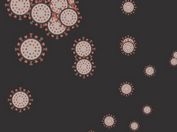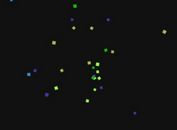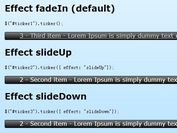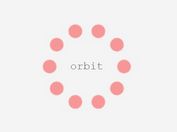Create An Animated Particle System with jQuery and Canvas
| File Size: | 2.84 KB |
|---|---|
| Views Total: | 9652 |
| Last Update: | |
| Publish Date: | |
| Official Website: | Go to website |
| License: | MIT |

A snazzy animated Particle System built with Html5 canvas element, RequestAnimFrame smooth animations and a little jQuery magic.
See also:
How to use it:
1. Create a canvas element on your web page.
<canvas id="canvas"></canvas>
2. Include the latest version of jQuery library from a CDN.
<script src="//ajax.googleapis.com/ajax/libs/jquery/1.11.1/jquery.min.js"></script>
3. The Javascript to generate an animated Particle System into the canvas element.
// RequestAnimFrame: a browser API for getting smooth animations
window.requestAnimFrame = (function() {
return window.requestAnimationFrame ||
window.webkitRequestAnimationFrame ||
window.mozRequestAnimationFrame ||
window.oRequestAnimationFrame ||
window.msRequestAnimationFrame ||
function( callback ){
window.setTimeout(callback, 1000 / 60);
};
})();
// Initializing the canvas
// Using native JS but could use jQuery or anything
var canvas = document.getElementById("canvas");
// Initialize the context
var ctx = canvas.getContext("2d");
// Set width and height to full window
var W = window.innerWidth, H = window.innerHeight;
canvas.width = 960;
canvas.height = 800;
// Some variables for later use
var particleCount = 200,
particles = [],
minDist = 80,
dist;
// Function to make canvas black
function paintCanvas() {
// Set color to black
ctx.fillStyle = "rgba(234,46,73,1)";
// Rectangle of white from Top Left (0,0) to Bottom Right (W,H)
ctx.fillRect(0,0,W,H);
}
// Now make some particles that attract each other when near
// Will set min. distance for it and draw a line between them when near
// Attraction is done by increasing velocity when near each other
// Make a function that will act as a class for the particles
function Particle() {
// Position them randomly
// Math.random() generates random between 0 and 1, so we multiply this by canvas width and height
this.x = Math.random() * W;
this.y = Math.random() * H;
// Also need to set some velocity
this.vx = -1 + Math.random() * 2;
this.vy = -1 + Math.random() * 2;
// Now the size of the particles
this.radius = Math.random() * 0;
// Now draw the particles, use basic fillStyle and start the path
// use 'arc' function to draw circle, uses x + y coordinates and then radius, then start angle, and end angle, then boolean
// False for clockwise
this.draw = function() {
ctx.fillStyle = "white";
ctx.beginPath();
ctx.arc(this.x, this.y, this.radius, 0, Math.PI * 2, false);
// Fill the arc we just made
ctx.fill();
}
}
// Push the particles into an array
for(var i = 0; i < particleCount; i++) {
particles.push(new Particle());
}
// Function to draw everything on canvas that we'll use when we animate whole scene
function draw() {
// Call the painCanvas function so it gets repainted each frame
paintCanvas();
// Call function to draw particles using a loop
for (var i = 0; i < particles.length; i++) {
p = particles[i];
p.draw();
}
// Call update function
update();
}
// Give life to the particles
function update() {
// This function will update evry particles position according to their velocities
for (var i = 0; i < particles.length; i++) {
p = particles[i];
// change velocities
p.x += p.vx;
p.y += p.vy
// We dont want them to leave area so only change position whent hey touch walls
if(p.x + p.radius > W)
p.x = p.radius;
else if(p.x - p.radius < 0) {
p.x = W - p.radius;
}
if(p.y + p.radius > H)
p.y = p.radius;
else if(p.y - p.radius < 0) {
p.y = H - p.radius;
}
// Now they need to attract, so check distance then compare to minDistance
// We will have another loop so it is compared to everyparticles apart from itself
for(var j = i + 1; j < particles.length; j++) {
p2 = particles[j];
distance(p, p2);
}
}
}
// Distance calculator between particles
function distance(p1, p2) {
var dist,
dx = p1.x - p2.x;
dy = p1.y - p2.y;
dist = Math.sqrt(dx*dx + dy*dy);
// Draw line if distance is smaller than minDistance
if(dist <= minDist) {
// Draw the line
ctx.beginPath();
ctx.strokeStyle = "rgba(255,255,255,"+ (1.2-dist/minDist) +")";
ctx.moveTo(p1.x, p1.y);
ctx.lineTo(p2.x, p2.y);
ctx.stroke();
ctx.closePath();
// Some acceleration depending on distance
var ax = dx/7500,
ay = dy/7500;
// Apply the acceleration
p1.vx -= ax;
p1.vy -= ay;
p2.vx += ax;
p2.vy += ay;
}
}
// Start main animation loop using requestAnimFrame
function animloop() {
draw();
requestAnimFrame(animloop);
}
animloop();
This awesome jQuery plugin is developed by waddington. For more Advanced Usages, please check the demo page or visit the official website.











